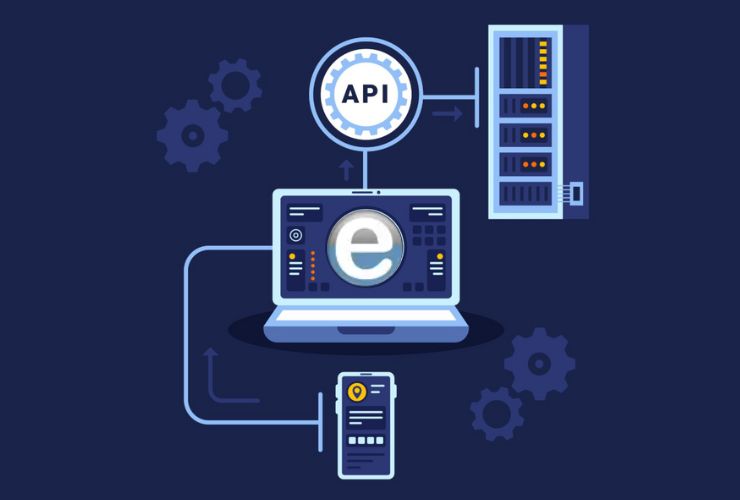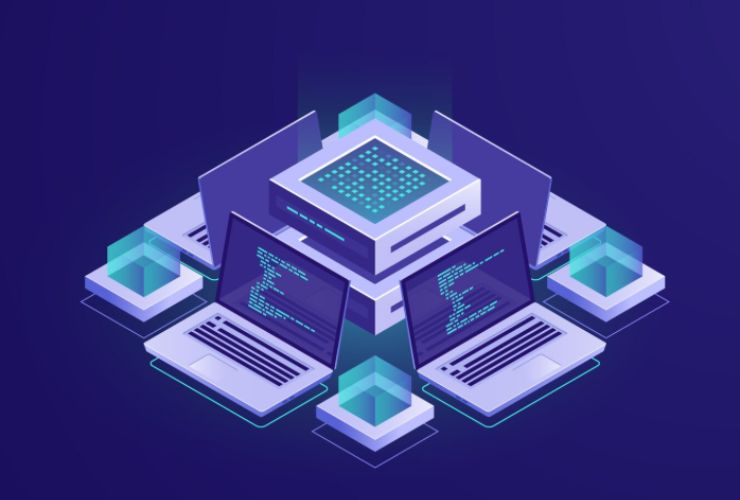Node.js is now one of the most widely used frameworks for creating contemporary web applications. Its event-driven, non-blocking architecture makes Node.js a great way for developers to create fast, scalable applications that are ideal for coping with high traffic. But what is Node.js, and why has it become so central to web development?
In this blog, we’ll dive deep into the benefits of Node.js, why it’s so widely adopted, and what makes it an ideal choice for developing scalable and real-time applications.
What is Node.js?
Node.js is an open-source, cross-platform JavaScript runtime environment based on Chrome’s V8 engine. Developers previously used JavaScript for client-side scripting alone, but with Node.js, they can use JavaScript for both the front end and back end of applications. This feature of writing server-side code in JavaScript is one of the primary reasons for the popularity of Node.js.
Node.js enables developers to employ JavaScript in creating full-fledged applications, which simplifies development, particularly for developers already comfortable with JavaScript on the client side. It simplifies the sharing of code between the back and front end, and lowers the level of complexity in using multiple programming languages within a single project.
Important Advantages of Using Node.js
1. Scalable and Fast Performance
Node.js has incredible performance. It employs an event-driven, non-blocking I/O model that makes it lightweight and efficient. Due to its non-blocking design, Node.js is able to handle multiple requests concurrently without losing speed, which makes it the perfect choice for creating real-time applications or services that must handle high traffic.
The single-threaded design of Node.js makes sure that things are done in the most effective manner. Its V8 JavaScript engine provides the performance enhancement, compiling JavaScript into native machine code directly for the purpose of maximizing speed.
2. Real-Time Application Development
Real-time applications such as chat applications, online gaming, or collaboration apps require continuous interaction between the client and server. Node.js suits such applications because its event-driven platform and WebSockets enable low-latency, real-time two-way communication.
Node.js allows developers to push data instantly to the clients, thereby making it well suited for real-time applications.
3. Unified Language Stack (JavaScript)
One of the greatest advantages of Node.js is that developers can use JavaScript for both front end and back end. Having both front and back end using the same language stack makes handling multiple languages for server and client side easier, which allows for faster development cycles and code reusability between client and server.
JavaScript is the world’s leading programming language, and with Node.js, developers can leverage their existing knowledge of JavaScript to code on both sides of their applications.
4. Vibrant Ecosystem (npm)
Node.js comes with npm (Node Package Manager), the largest and most-used open-source library and module community. It’s easy to add third-party modules to your application, speeding development and reducing the amount of wheel-reinventing you have to do. If you require adding authentication, file uploads, or database connections, there is most likely a package available via npm that can assist you.
The npm ecosystem is constantly evolving, and with over a million packages to select from, it has a plethora of resources to accelerate development.
5. Cross-Platform Development
Node.js is a cross-platform runtime, and as such, it can be utilized on Windows, macOS, and Linux. This facilitates easier development of applications that can run across various environments without significant modification to the codebase. Also, since Node.js supports server-side code being written in JavaScript, it makes cross-platform app development easier, particularly for front-end JavaScript developers.
Use Cases of Node.js
Node.js is very flexible, and its applications go beyond the standard web applications. Some of the most common use cases for Node.js are as follows:
1. Creating RESTful APIs
Node.js is a great choice for creating RESTful APIs because of its event-driven, non-blocking architecture. The APIs can process multiple requests in an efficient manner, making Node.js the best fit for scalable API solutions that need rapid response times.
2. Real-Time Applications
Node.js is commonly used in real-time applications such as live chats, messaging apps, and online gaming. The capacity to create persistent connections between server and client with low-latency data transfer is crucial for these kinds of applications.
3. Single-Page Applications (SPAs)
Node.js is also perfectly suited for SPAs, in which content is dynamically replaced without refreshing the entire page. Node.js’s event-driven, non-blocking characteristics make it an excellent backend choice for responding to requests in real-time as users navigate the app.
4. Microservices Architecture
Developers are increasingly adopting microservices architecture because it allows them to divide applications into small, manageable chunks. Node.js, being light and scalable in nature, is an ideal candidate for developing microservices. Developers can develop tiny, independent services that can interact with one another, enhancing performance and maintainability.
5. Server-Side Web Applications
For the conventional server-side web applications, Node.js utilized in collaboration with frameworks such as Express.js to deal with HTTP requests, routes, and middleware. The support to manage thousands of concurrent connections with a little overhead makes it an ideal option for creating high-performing web applications.
Why Node.js is the Future of Web Development
The landscape of web development is changing, and Node.js is at the forefront with its speed, flexibility, and simplicity. Whether you are creating a straightforward website or a sophisticated, real-time web application, Node.js has a set of features that make it a desirable tool for developers.
By enabling developers to employ JavaScript throughout the entire stack, providing speedy and scalable performance, and enabling real-time data exchange, Node.js is ideal for contemporary web development.
In a rapidly changing digital world, Node.js continues to grow in popularity, and its community of developers continues to innovate and push the boundaries of what’s possible with JavaScript. Whether you’re a seasoned developer or just starting, learning Node.js can be a game-changer for your web development projects.
Conclusion
Node.js is not just a JavaScript runtime—it’s an entire ecosystem for building high-performance, scalable, and real-time web applications. Due to its salient features, including non-blocking I/O, a single language stack, and a humongous open-source library of modules, Node.js has become one of the most powerful tools in modern web development.
If you want to develop high-performance applications that can serve a high number of concurrent requests, or you want a solution for real-time communication, then Node.js is certainly worth a look. The future of web development is rosy with Node.js leading the way, and it’s a framework that is here to stay.














